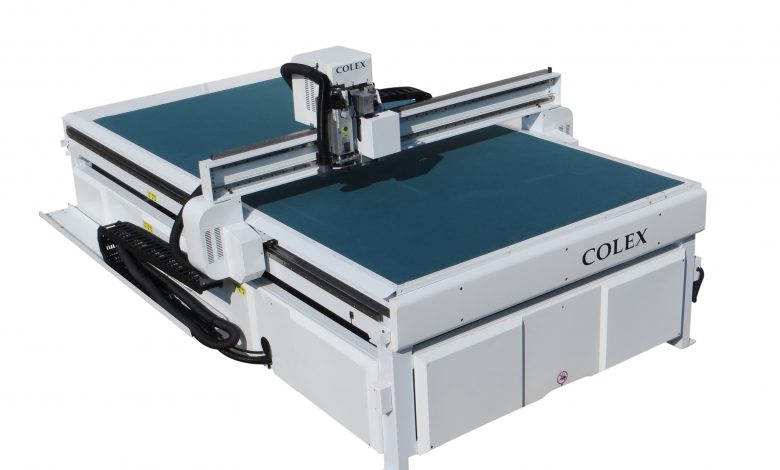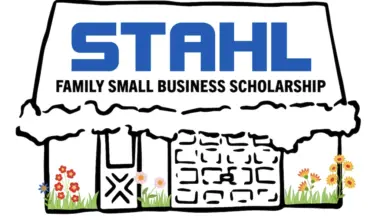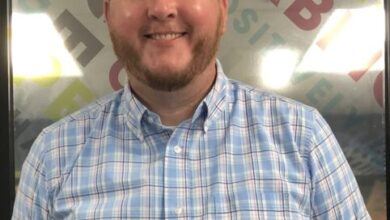Flatbed Cutters: Cream of the Crop
Flatbed cutters give shops innovative, cutting-edge solutions that help get the job done.
Cutting and finishing continue to be vital elements in the overall print/production process for sign shops and print service providers (PSPs). With the vast array of digital printing equipment and media choices currently on the market, many print providers are now finding that cutting and finishing solutions are no longer a one-size fits all deal anymore.
Depending on the application and substrate being utilized, shops can now choose from a wide selection of routers as well as the growing crop of digital flatbed cutters with various cutting heads. In addition, automation and physical handling of the final product is also being looked at more closely since each product and system provides a different set of workflow possibilities.
Over the past few years, the rise of the flatbed cutter segment has become an important new area for growth. With a number of new flatbed cutter options available, SDG offers an overview of some of the current product trends in the market as well as a look at the most important features to have on your machine if you are shopping for a new system or an upgrade.
Gerber Adds MCT Digital to Portfolio
Last fall, Gerber Technology made a major move in this market by acquiring MCT Digital, thus adding modular laser cutting technology to their existing industrial strength finishing solution hardware and software portfolio. “The addition of MCT’s high-end large-format cutting builds on Gerber’s heritage in the sign and graphics and packaging industries, as well as giving Gerber a key technology platform to serve its industrial markets,” explains Lenny Marano, vice president, Product Management & Marketing Automation Systems at Gerber Technology, Tolland, Connecticut.
“We hear from sign shops and packaging providers that in order to stay competitive, they need to offer their customers a wider range of products and services, faster. Gerber is excited to have acquired MCT Digital because of the versatility and premium performance their product portfolio offers, allowing their customers to scale and profitably grow their business,” he adds.
Modular Systems are Key
He says if you are producing a wide variety of projects, having a system that is modular and interchangeable based on your production is key. “Laser, router and knife tools will allow you to accept any job coming in without the need to outsource-but production volumes in different applications can shift, so being able to adjust these tools quickly and easily is important to keeping up production volume. In addition, having an easy to use, intuitive software is important to optimizing your workflow. As you go from job to job, you want to keep your processing time to a minimum. Not having to toggle between different software systems and operator’s windows keeps that transition smooth.”
He points out having an intuitive interface minimizes operator training and reduces the risk of employee turnover. “From a results standpoint, you want a mechanical platform and control system that not only produces jobs quickly, but works together to produce high cut quality and accuracy.”
Marano adds that the benefit of having such a modular system is that shops can upgrade their tools at any time if they decide to take on a new production application. “As far a performance goes, we are on our second generation of the MCT Cutter, which is faster and more accurate than its predecessor. Any first generation machines can be field upgraded. Also, we’re constantly adding new features, functions, and performance enhancements to our TigerVision software and customers can quickly find out if they’re on the latest version and contact us about upgrade paths,” he explains.
Expanding Capabilities
Beatrice Drury, director of marketing and communications at Zünd America Inc., Franklin, Wisconsin, says that applications in packaging and fabric printing are changing the landscape of the finishing sector market.
“As PSPs seek additional ways to expand their offerings and capture more revenue, we see a lot of activity surrounding packaging and digital textiles.” She says because Zünd offers finishing systems that are continually upgradeable, they establish on-going partnerships with PSPs, continually assisting them as their needs change by expanding their capabilities with additional tooling, software and workflow automation in these areas.
Important Features
When asked about important features to have on a machine she notes that today it’s rare to see a system that doesn’t necessitate a drag knife, so the Universal Cutting Tool is practically a mandate. “Beyond that, the Zünd sales and support specialists are always engaged in making sure they understand the materials the customer is using and can offer recommendations for the ideal configuration. The user interface of Zünd Cut Center, which offers tooling recommendations based on media selection, makes the system user friendly in a way even a novice user can be confident. While it’s not a feature of the cutter, lifetime phone support with every Zünd cutter allows a lifeline to operators whenever they are unfamiliar with a new material.”
Tool Options
She adds that for shops looking at possible tool options, “PSPs should examine both the power of the tool, for example how strong a router do they really need for processing the majority of materials they are working with, and the power of the workflow behind it, i.e., how easy is it for the operator to work with the tool and the machine, what automation features are available for setup or tool/bit changes to minimize having to rely on experience or trial and error.”
Drury says for example, Zünd’s powerful 3.6kW high-performance router with ARC tool changer is a good option. “The RM-L module features a robust routing spindle that delivers 3.6 kW of processing power and a maximum torque of 0.7Nm. Especially combined with the automatic 8-position tool/bit changer and minimal quantity lubrication, the RM-L routing system is perfect for processing acrylics, polycarbonates, aluminum/ACM materials, MDF and other wood products. This makes heavy-duty digital routing efficient, productive, and profitable without the need for a separate CNC router.”
Media Handling
She also notes that there are considerations to be made for material-handling options. “What levels are available, e.g. from manual loading, tandem operation (with loading/unloading and processing alternating between both halves of the machine), to semi- and fully-automated, with the latter including automated loading, unloading, stacking, and perhaps even robotic pick and place. Similarly, for automated feeding of flexible materials (vinyl, films, textiles) there are various types of roll-offs available that can minimize stretch, wrinkling, and other issues that arise depending on the characteristics of the textiles being cut.”
Drury says shops need to look at considerations for cut-to-print registration. “Zünd now offers Over-Cutter Camera registration-OCC, a fully automated registration system that captures all register marks at once with a single shot. Eliminating the need to capture each mark individually significantly increases the speed of cut-to-print registration and overall productivity. The OCC system is now available for all Zünd cutter series, G3/S3 and dual-beam D3.”
“To summarize, Zünd’s idea of a multifunctional machine-and what PSPs should look for-is not just a system that comes with a range of tool options, but one with multiple, high-level capabilities where each function is integrated in an efficient, integrated digital workflow and geared toward delivering the highest levels of productivity,” Drury explains.
Intelligent Software
Barry Budwit, vice president and general manager of Summa America, Beverly, Massachusetts, notes that customers are looking for a quick turnaround of the items they produce. “Therefore, an intelligent software database, combined with tool modularity and fast accurate cutting possibilities are definitely key-requirements a flatbed cutting systems must contain.”
He says that large format flatbed cutters, merging perfectly with popular printer sizes, are indispensable in the sign making, textile and other industries. “Combine this with a large choice of material handling options, such as conveyor extensions, roll-supports, baskets, etc., to ensure a smooth workflow, a clean environment and high-productivity at all times, and you are set to provide utmost efficiency, speed and accuracy to anyone’s workflow.”
Features to Consider
Budwit says some important features to look for include a Conveyor System and Media Advance Clamps. “The Conveyor System allows users to cut, crease and annotate large lengths of (flexible) material to large production runs. Pneumatically driven media advance clamps hold the material down while pulling it forward to work continuously in panels or multiple jobs. In combination with the Conveyor System and the Media Advanced Clamps, the Roll Support System is ideal for processing roll material on all the Summa Flatbed Systems. The Roll Support System on our F2630 consists of two parts, so two smaller rolls can be loaded next to each other to maximize the workload of the machine.”
Working Area
Budwit points out that within the world of large-format digital printing, most common sizes of textile printers are equipped with a working width of 3.2 meters to be able to print large rolls of textiles. “Both new Summa flatbed cutters, the F3232 and F3220, also cover a working width of 3.2 meters, making them the ideal companion to process common, popular print sizes with utmost ease and accuracy.”
He says that the matching working area sizes of the textile printer and Summa’s new finishing cutter sizes will lead to a print and cut workflow, fitting seamlessly into each other and offering endless solutions to the flourishing textile market.
“However, not only the textile market will benefit from Summa’s two new sizes of flatbed finishing systems. Both flatbed sizes are also perfectly suited to cut the increasingly popular board sizes of 3 x 2 meters. Additionally, the F3232, with its working area of 3.2 x 3.2 meters, has the inclusive feature: Summa’s Tandem Mode. This feature will increase productivity of the customer’s workflow by using the front zones and rear zones alternately. The Tandem Mode will be most beneficial when processing board sizes of 1.5 x 3 meters.”
He adds that all existing tools and models within the F Series gamut are designed to fit each size of the flatbed range, the F3232 and F3220 sizes inclusive. This ensures the highest versatility to process all kinds of material and offer numerous high-end solutions to the sign making, textile, and digital print industries.
Lastly, he says the need of great software is not something to underestimate. “The Summa GoSuite software platform has been developed to enable users to make the most of their print and cut workflow.”
Summa Spells Success for Printsquare
Budwit says that one of their customers, Haarlem, Netherlands-based large format print company, Printsquare, has accelerated its productivity and optimized its workflow since it installed a Summa F1612 flatbed finishing system two years ago. The unit is working in tandem with their Mimaki printers.
According to Ronald Aarts, owner at Printsquare, the constant accuracy offered by the F1612 is a true game changer. “Customers are aware that we have a lot more potential now than before the purchase of the F1612. The possibilities are endless since the arrival of the Summa flatbed finishing system. Production and our customer portfolio have grown considerably,” reports Aarts.
Look for Versatility
Maureen Damato, sales dealer account manager at Colex Finishing Inc., Elmwood Park, New Jersey, says one of the most important things to look at when searching for a new flatbed-cutting table is versatility. “It doesn’t matter if you are searching for your first flatbed or an additional one to expand productivity. The question you need to ask yourself is ‘Can this new flatbed cutter process all of substrates you need it to?’ Asking this question while shopping around for a flatbed cutter will narrow down the selection. Things to look for are the variety of cutting tools and which of these tools will process your current and future materials. A machine with all the “bells and whistles” doesn’t always mean it can manage your workflow.”
Software
She adds that the second most important thing is the software that runs the cutter. “Is the software compatible with your design software? How user friendly is the software for your operators? If there is a problem in the cut file how easy is it to address? These are all questions you should be asking yourself when considering a new flatbed cutter. There are many different flatbed cutters on the market. For the most part they all will do the same thing. Some may route better while others are better at knife cutting. What really sets them apart is the software that runs the cutter and the customer support for that software package.”
Damato reports that flatbed cutters are getting faster and faster just like wide format printers. “The newer flatbed models coming out on the market are faster than their predecessors. There are new features like QR codes and material databases that reduce job setup time as well. Overall, the machines on the market today are faster and more productive than the machines of yesterday.”
Colex Sharpcut
She says that the Colex Sharpcut excels at being one of the most versatile and user-friendly machines on the market. “Our software is very intuitive and compatible with a wide range of design software and RIPs. Our flatbed cutter has the ability to cut paper products, foam, plastics, composites, aluminum, copper, adhesive vinyl, and much more. We take great pride in our polished edges on routed Acrylic. Unlike our competitors who need to make multiple passes using a diamond-polishing bit. The Colex Sharpcut is capable of getting a polished edge on the first pass with an inexpensive carbide bit. This not only saves you time but also money on consumables.”
She adds that the most popular tools in the graphic industry are the Oscillating Knife for Foamboard, Creasing Wheel for folding corrugated, Kiss Cutting for vinyl decals, Coroplast Knife for coroplast and corrugated, and the 3Hp Router for rigid material.
Colex offers the Engview 2,000 Resizable Templates that are user friendly. “Shops no longer have to stock a supply of custom size boxes and can print and cut any custom box required. This software is a great value at $1,500,” she points out.
AlphaGraphics Scores with Sharpcut
Jeff Bittner, owner at AlphaGraphics in Wood Dale, Illinois, reports that the Sharpcut has made a big difference in his business. “Adding the Colex Sharpcut to our arsenal of equipment has been one of the best decisions we have made for our company,” says Bittner. “We originally looked to Colex to solve a very specific need and it was a perfect fit. We knew it had other capabilities beyond our initial requirements, but what we didn’t know was how much that would impact our business. We very quickly learned that we could keep more of our sign business in-house, which in turn reduced lead time and increased the bottom line. We have been very pleased with the Sharpcut and the support from Colex,” he concludes.
New Developments Offer Upgrade Options
Drury says that new developments on the market make it worth an upgrade to your system. “Upgrading Zünd Cut Center software has been very popular as it provides speed enhancements by leaning on artificial intelligence to read registration marks more efficiently and thus processing cut jobs more quickly. For PSP who utilize a router, the Automatic Router bit Changer garners greater speeds by seamlessly moving from one routing function to the next without operator intervention. Finally, for packaging and POP providers, the fully automated Board Handling System (BHS150) allows a level of industrial automation with QR code workflow that makes even overnight production a possibility.”
Drury says the company currently offers 19 different tooling options, not to mention various corresponding media-handling options-far too many (tools and applications) to list here. Each time a new tool is added to the Zünd offering, it is developed with the intent to make it accessible to both new and existing users.”
She concludes that expanding capabilities with additional tools and dynamic cuts are also key to a shop’s success. “Anytime a PSP can move away from a ‘square-cut’ offering, they are upping the value of their deliverables. But even if straight cut signage is their business model, Zünd can offer so many ways to optimize different workflows, it makes any system-and corresponding ROI-an easy choice.”
Gerber MCT Cutter
Marano says that the Gerber MCT Cutter is a very versatile machine. “It excels in laser cutting, routing, and knife cutting in sign and graphics, packaging, and industrial textile applications. The MCT cutter can finish textiles for soft signage faster and more accurately, with unique software features to compensate for common errors.”
“By utilizing a laser for soft signage, you can often eliminate several touch points in finishing due to the sealed edge you’re left with. This allows you to reduce costs and production time in sewing, hemming (and) hot knifing, which rapidly leads to a fast return on investment. In addition, its fully integrated production and target registration software system, TigerVision, makes it ideal for print-to-cut workflows in signage and packaging.”
He says the most common tool to application configurations include:
– 100W liquid cooled co2 horizontal laser: increasing speeds by 30% and commonly used for finishing textile with sealed edges as well as acrylic, wood, and various other rigid substrates;
– 5kW Router: commonly used for various rigid substrates that can’t be knife cut, acrylic, woods, and certain metals;
– Kiss cutting knife tool: for cutting pressure sensitive labels, decals, and vinyl;
– Creasing wheels for folding cardstock, carton and corrugated media;
– Driven Rotary Tool for textiles and banners.
“With such a diverse set of tools available that are customizable and interchangeable based on the application, there are endless possibilities. You could add soft signage, laser engraved acrylic pieces, engraved wood signage, 3D lettering signage, oversized banners or flags, standard rigid signage, and even customized apparel.”
Marano adds that their flatbed-cutting systems have made an impact on their end users’ businesses. One such output provider is Printed Ink, located in Huntingdon Valley, Pennsylvania. The shop has been using a Gerber MCT Cutter since October 2018.
“We went from doing everything by hand to having a giant digital worker who is very accurate and fast,” reports Jonathan Merendlender, founder of Printed Ink. “Aside from the obvious benefits of custom shapes, 3D lettering, and fabrication, it drastically cut down on labor and increased capacity almost instantly.”

















